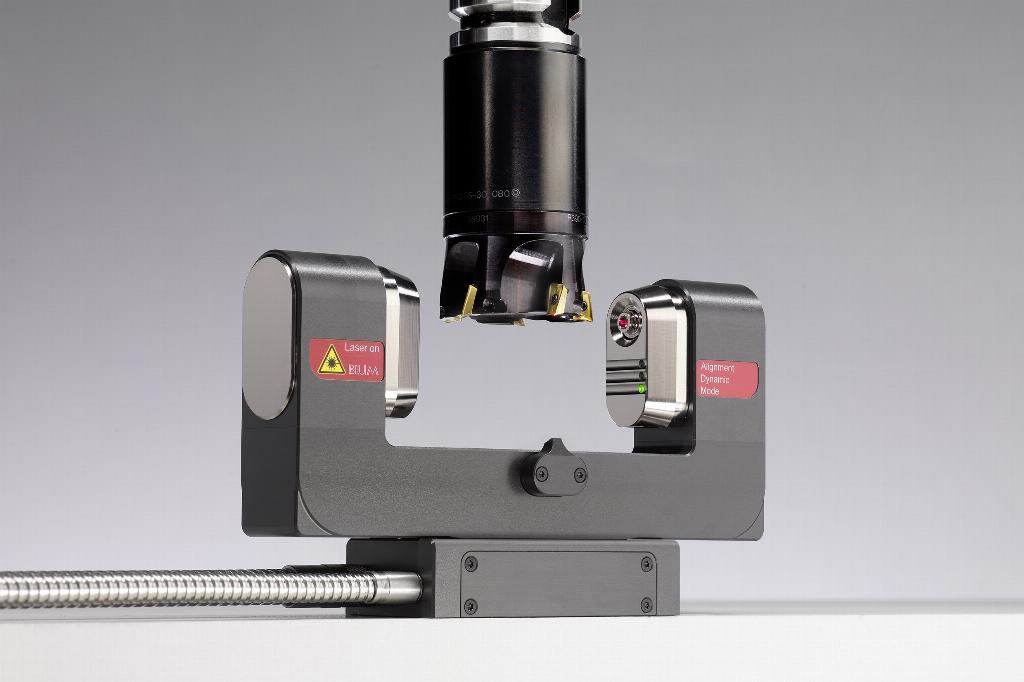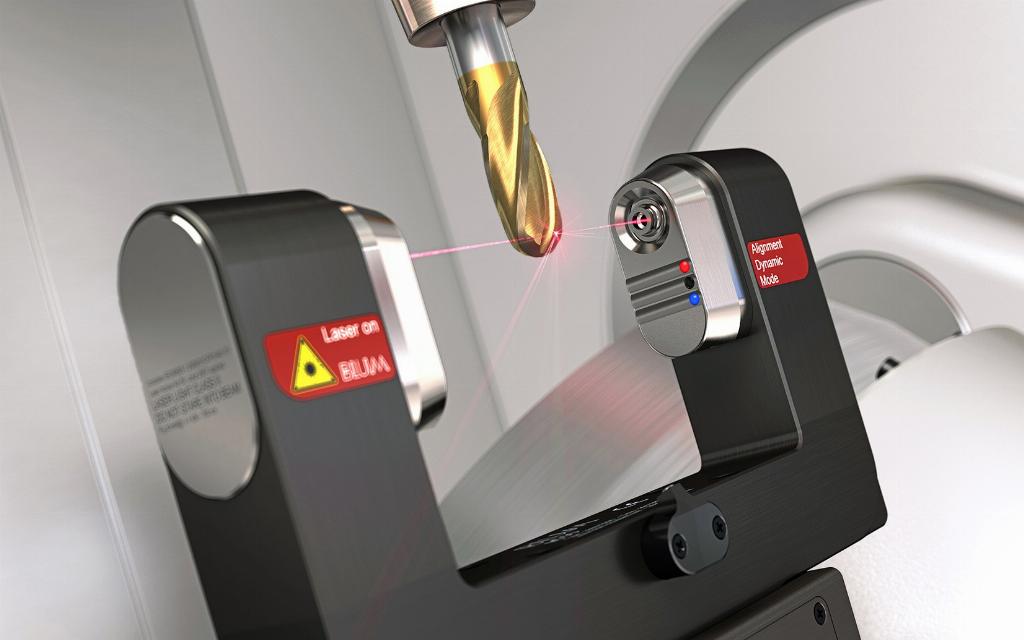Adapt or fail?

Adaptive Machining is fast giving manufacturers the golden opportunity to secure greater control, speed and accuracy when setting tools and controlling workpieces. David Mold, managing director of Blum-Novotest explains why.
Industry can be a difficult beast to change, especially if engineers believe they have already found the best way of doing things. However, this is modern-day manufacturing we are talking about and standing still is no longer an option - the search to do things faster, better and more efficiently is changing perceptions and with it comes a major opportunity for ‘Adaptive Machining’.
It has been around for some time, but with the new approach to improving and controlling manufacturing processes what does it mean for companies that make their living out of cutting and shaping metal.
In a nutshell, it is all about being able to measure and control the three main variables in the machining process, which are the cutting tools, temperature and the workpiece itself. Controlling these variables on the machine reduces the tried and tested method of setting tools off the machine or taking the workpiece off the machine to make the measurements on a coordinate measuring machine (CMM).
We are focusing here on the measurement and control of the cutting tools. By utilising on-machine tool setting systems you can quickly tell if a tool is slightly off, meaning you can re-set or change the settings immediately before a component is damaged or ruined.

The first thing we need to get clear is that this isn’t a new trend. In fact, Blum-Novotest first invented the concept of using a laser system to set cutting tools way back in the 80s, nearly thirty years ago. Up until then, machine tool users would set tool lengths and diameters either mechanically on the machine using devices such as slip gauges or setting blocks or a pre-set system off the machine.
This was satisfactory at that time due to the lower spindle speeds and the lower accuracy requirements, but as machine tools have got faster and accuracy increased over time, there was a growing feeling that this technique for tool setting would not be a suitable solution going forward.
The main reason for this thinking was, by setting tools mechanically on the machine, the spindle speed was zero. Indeed, when setting with pre-set systems off the machine not only was there no spindle speed, but also the tools were not clamped in the spindle.
When tools were then run in the machine at higher spindle speeds under clamped conditions, the tool data would be incorrect due to thermal expansion being created within the spindle - effectively making the tools longer and with a larger diameter.
If the spindle suffered any bearing wear then the tool diameter could be significantly larger than expected and this would result in quality issues, deterioration of the cutting tool and increased downtime.
The birth of the solution
After years of research and development, Blum-Novotest’s experts hit on a solution of non-contact measurement within the machine by use of laser systems.
The tool would be clamped in the spindle and rotated at the speed that would be used for cutting, with the laser completing the measurement in-situ. This recreates the exact conditions that would take place during the actual machining and provides precise data and the most accurate results possible.
Of course, tool sizes and shapes change whilst machining is in process so today it’s imperative that these changes are automatically measured and corrected live whilst machining.
The Laser Control was born, but this was just the start. Over the years, this technology was enhanced and improved in response to user feedback to include additional features such as integrated tool cleaning, drip rejection technology and single point cutting tool monitoring so individual cutting edges could be checked.
Despite these advancements, ‘adaptive manufacturing’ was still seen as a luxury rather than a necessity and there was a lot of issues around validation that the off-machines supposedly delivered.
Digital meets analogue
More changes were afoot and, in 2018, the latest development of the laser was revealed. The LC50-Digilog – LC stood for LaserControl and 50 to celebrate the fact we were launched it in our 50th year of trading.
A few years earlier we had introduced a revolutionary technology for the workpiece probe products called Digilog. Traditional workpiece setting probes were digital, that is they were either triggered or not triggered - on or off.

We then introduced an additional analogue aspect where not only would the probe show if it was triggered or not, but it would also measure how much the probe was triggered by also using an analogue signal. Digital + Analogue = Digilog.
The next development of the Laser incorporated this analogue aspect so became part of the Digilog family. By measuring how much the beam was being shaded, much more data could be captured and so much more functionality was possible than ever before.
There are a multitude of advancements that the LC50-Digilog provides over standard lasers, including: more tool data can be captured in a much shorter timeframe; therefore, tools can be measured 60% faster with LC50-Digilog than with a standard laser; Digilog calibration - due to more tool data we can accurately measure tools whilst eliminating coolant or dirt on the tools or in the machine, providing higher accuracy than ever before; Spindle or tool run-out can be measured accurately and incorporated into the measured result; Premium laser optics - higher grade laser diode provides much higher accuracy achievable; High pressure tool cleaning nozzle provides much better cleaning functionality of the tool. This equates to a reliable system, more accurate measurements/less effects of coolant or swarf.
Machine tool operators will welcome the fact LC50-Digilog’s connection in the machine is via a new smartDock, which makes installation easier and takes away the need for a Blum technician to remove or re-fit the laser. Less cables and air pipes are used making the installation look neater in the machine.
The pneumatic valves are also located in the smartDock so operation is much faster. The result is a better protection of the optics meaning less downtime for customers, whilst compressed air consumption is reduced to zero.
Adaptive Machining is the future
All of these advancements are making switching to Adaptive Machining a lot easier and, after years of knocking on the doors at small, large and multi-national manufacturers, we are definitely starting to see an increase in demand.
Our ‘in-machine’ probes and laser systems are now in place in some of the world’s largest companies and hundreds of subcontract manufacturers who want to achieve greater accuracy, faster cycle times and less waste.
The challenge now is to continue to advance the technology and we have already made breakthroughs in adding six applications to LC50, including ProfileControl (complex tool geometries), GrindControl (grinding wheels/tools), Orientate Tool (for engraving type tools) and Chamfer Control (measurement of chamfers).
At EMO 2019, Blum-Novotest will also launch LC-Vision, our new software platform that will make Adaptive Machining even easier. It’s the future of measuring, it’s as simple as that.













